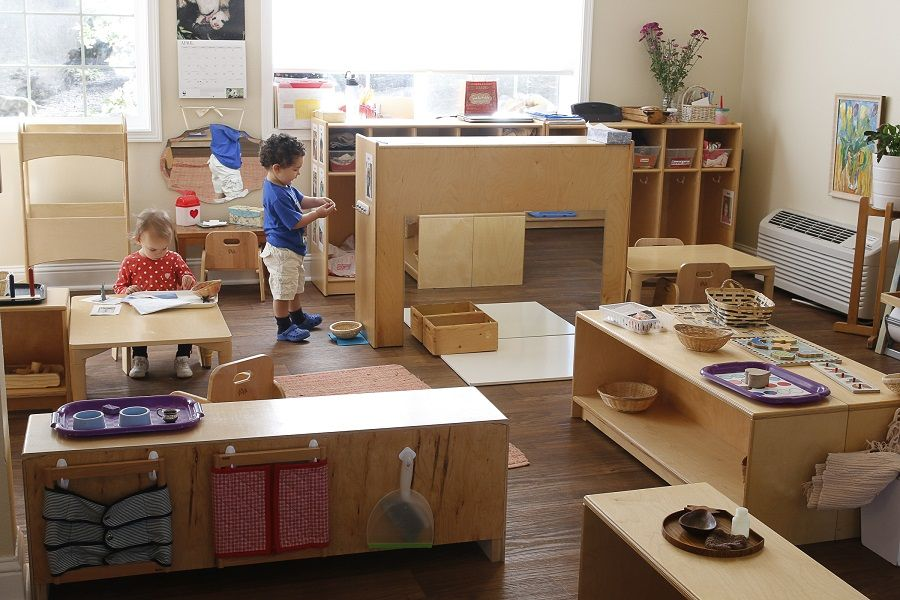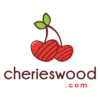At the very beginning of my journey with Cherieswood I’ve spent quite a bit of time reading and learning about the Montessori’s philosophy. I’ve quickly discovered how big this movement has become and how difficult it is at times to fully grasp what is a Montessori toy and what characteristics it should have. Long story short: not every wooden toy that mentions Montessori is ultimately 100% compliant with its principles and that’s a good thing.
Today we dive deep into the Montessori world and I will try to give you a clear understanding of what Montessori is about, why it is important, what are the best Montessori wooden toys and why they can be beneficial for your baby’s development.
To write this article I’ve definitely spent a lot of time reading and researching online, but I also found a great Facebook group that is specifically focused on Montessori principles and that I highly suggest if you have more questions or if you want to join a vibrant community of people.
The Montessori method for babies and toddlers
We have a full page dedicated to the Montessori philosophy but today I would like to take a different approach and really explain what Montessori thought was important for babies and kids. First of all, Maria Montessori envisioned most of her principles to be applicable from birth: this is a common misunderstanding, people think that Montessori can only be applied just to kids that are usually 3+ year old. The reality is that Montessori defined a set of principles and “planes” of development that apply to different stages of kids’ life. Without having to repeat all of that, the most complete list of planes that I found is on Wikipedia and it explains well why each one is important and what characterizes it. Look for the paragraph that talks about psychology. In this article we are specifically focused on understanding the Montessori method and related wooden toys for babies and toddlers, so from birth up to 6-12 months old.
After reading quite a bit on principles and planes, I think that the most important concepts to grasps about Montessori’s education are ultimately two:
An environment that prioritizes autonomy and independence
This one is the first core principle: babies and kids need to be able to experiment in a full autonomous environment where adults are there to guide and help, but not to lead. To explain it even better: adults should really let babies discover and play with things and not try to tell them what and how for their activities.

As parents, you can help facilitating this process: for example, you should always use a rich vocabulary with your baby, explain what he is looking at and what you are doing, name things with their proper name and make sure he gets constantly stimulated by the environment around him. In the initial phase, after birth, babies are absorbent minds as Montessori says: they tend to learn and absorb all sorts of things around them, including names, places, feelings etc. That’s why the environment that surrounds them and how you help as an adult are both important. Both become a part of who they are in the first 12 months of life.
Respect for your baby
The second core aspect of Montessori’s approach is to be respectful with babies and kids. This is probably something that nowadays we give for granted, but in the 20th century things were different and Maria’s approach was a big innovative change for the times. Being respectful translates into a few things like not raising your voice with babies, be kind if they ask or do something strange, let them express themselves, being patient and most importantly, pay attention to what they have to say and want to do.
I wanted to highlight these two core principles because they guide everything else she studied and because I think they are critical to a great start of your relationship with your baby.
Both these aspects are further developed in a series of additional principles that she studied. Many of them are ultimately connected to the idea of letting babies build, play and explore things by themselves, because only with that, they can really learn how things work and get the necessary curiosity to keep learning.
Montessori wooden toys
Let’s dive deep into toys and how Montessori’s principles apply to them. A Montessori wooden toy is a toy that stimulates and incentives learning in multiple ways: we are usually talking about a toy made of wood that can be touched, manipulated or that simply uses specific colours and images to stimulate the baby. There is not a strict definition of course, and ultimately multiple wooden toys could belong to this category if they allow the baby to experiment and play autonomously with them. Autonomy is the key term to keep in mind: all these toys should let the kid play with them without external help or guidance and most importantly, they should allow the kid to come to different solutions and scenarios to stimulate his creativity.
Key characteristics
If you are looking for one of these toys you should pay attention to a set of aspects that I am listing below – some of them are pretty common to wooden toys in general (read more about benefits of wooden toys in a dedicated article), but some others are definitely specific for Montessori toys:
- Wood and natural materials
99% of Montessori toys are usually made of wood, but there are cases where you can find a mix of materials. Make sure they are all natural materials: this is not only a great way to buy a very safe toy for toddlers, but also a key aspect of the Montessori philosophy. Natural materials create a more intimate connection with the baby and they have a different feeling when she touches, stretch or manipulate them.
- Are they about a specific learning activity?
You should consider a toy that is focused on one single concept: colours, shapes, numbers, animals etc. It’s all about minimalism and focus: you baby will spend time experimenting and learning about that specific concept and focusing on one thing will definitely give better results for his development. You should probably avoid toys that have way too many “topics” and objects, they will distract the baby or even confuse him.
- Simple and effective
Connected to the previous point: Montessori wooden toys are usually very simple and effective at what they do. Especially for toddlers, we are usually talking about toys that are very visual, have simple ways of being used and that are open to manipulation, meaning that your baby can touch, transform or modify them obtaining different results. To give you an example: a busy board will definitely have just a few areas that can be touched and transformed and all of them should allow for different combinations and positions so that the baby can explore different ways of playing with them.
Examples and ideas of Montessori wooden toys
Now that we have discussed the core features of these toys, let’s look at a few examples of toys in this category – these are examples and you can definitely find a lot more online.
Cherieswood’s Busy Board

This is clearly our first suggestion because the busy board is the combination of many aspects discussed: it has a strong learning scope and focus (learning animals, numbers, colours etc) and it’s definitely something that is designed to be manipulated by a young kid between 6 and 24 month old. It comes with three different themes: Llama, Space and Animals.
It’s 100% made of natural materials and very robust. Last but not least, you can transform the busy board into a book shelf to let your kid play and bring things back in order (another important aspect of the Montessori philosophy!)
Wooden balance board

This is a classic Montessori toy and besides its simplicity it can be used for multiple things. First of all, it will be very useful to let your baby learn how to stay in balance but it will also be easy to use the balance board as a race track for cars and other toys, a way to seat and finally something to hide behind when playing in more imaginative games. This is a toy that can be used at different ages and that will evolve as your kid will use it for new things.
There are multiple brands in the market and I’ve linked Amazon to let you see most of them. If you look for something specific for balance boards, a brand like BunnyHopkin could be a great idea.
Climbing triangle or Pikler triangle

This one is another classic wooden toy and I am sure you might have noticed it while looking for toys. Truth to be told, this is not exactly coming from Maria Montessori but it was actually invented by Dr. Emmi Pikler following similar principles.
While you might think that the climbing triangle is for older kids, it is actually designed for young babies of 6+ months as it quickly adapts to the abilities of toddlers like to the ones of kids of 3-4 years. The triangle allows toddlers and kids to learn their own boundaries, if they cannot climb, they will simply not do it: that’s why a toddler might simply get close to it and start looking at the first rung without going further, while a 3-year old might start climbing it. Thinks will change as they both grow. The beauty about this toy is that it can become much more than what it is, your kids will transform it in a castle, in a treehouse or an helicopter depending on the mood of that day!
I’ve selected a brand that seem very focused on the triangle and as passionate as we are about building Montessori wooden toys! You can many more out there in the market, Etsy has some great options as well.
Elisa










